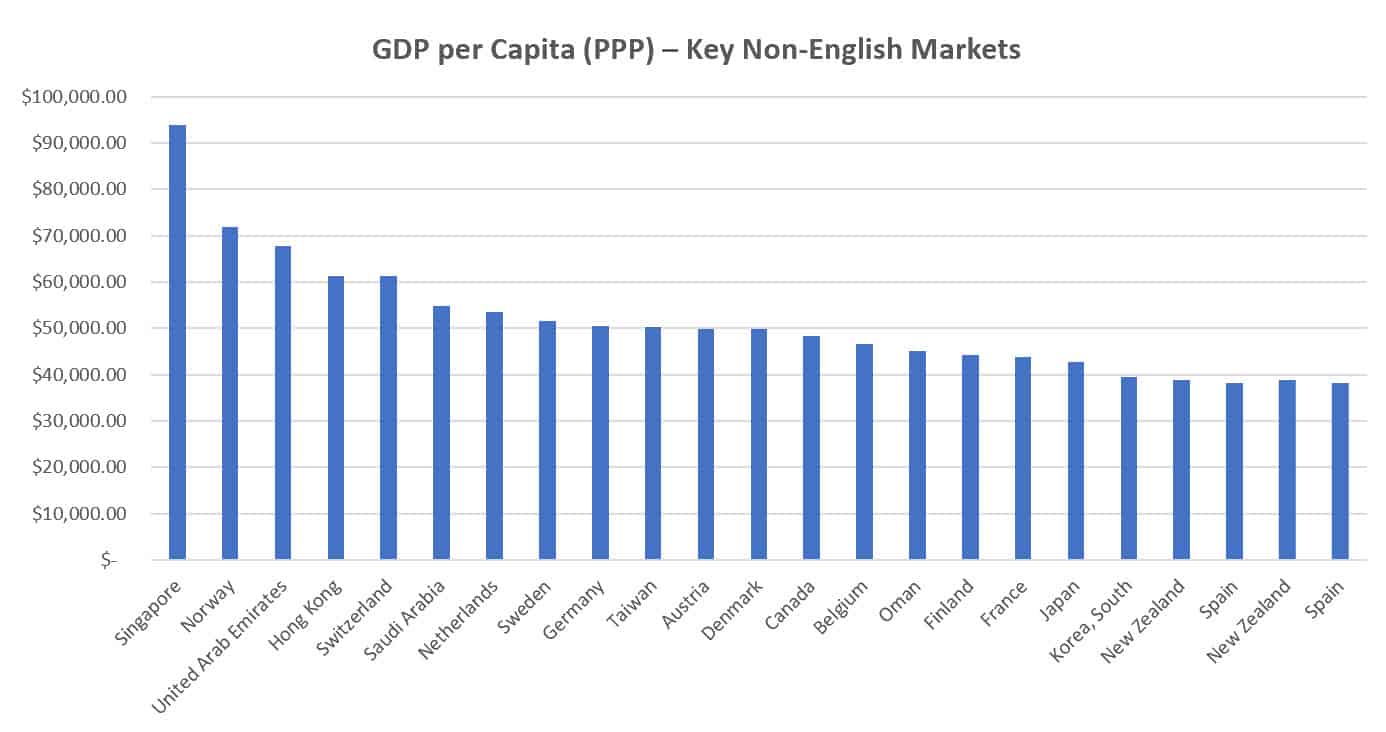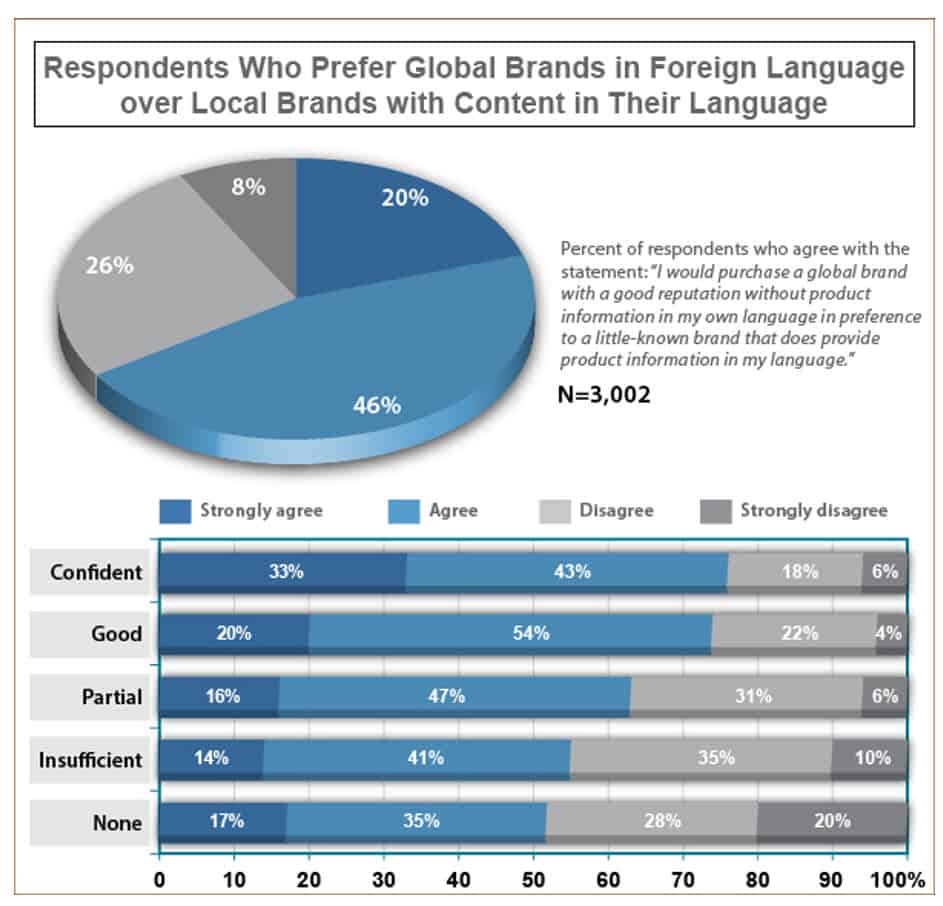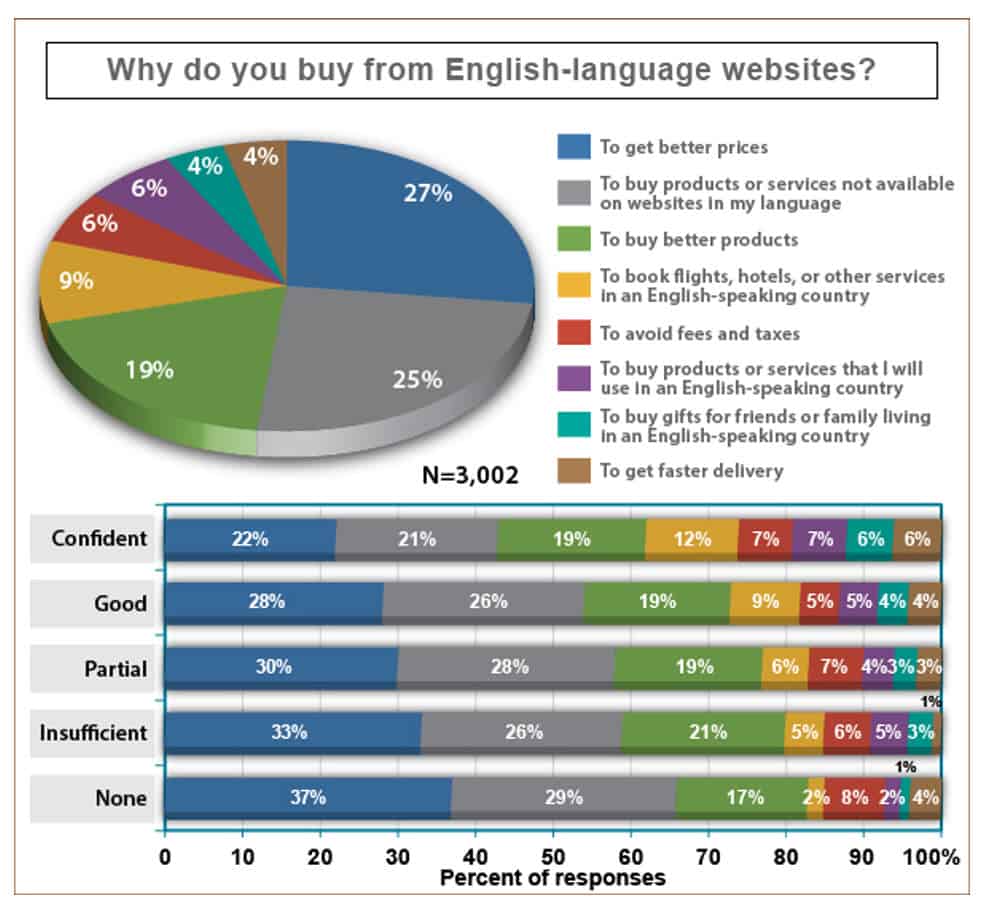This time, we’re discussing whether English is good enough for your customers – and it’s a big topic so we’re splitting it into two posts. This week, we’re looking at where English really isn’t good enough, and next week we’re looking at the ecommerce performance boost you can get from translating even when your customer speaks reasonable English.
Ian:So tell me Tim – what’s wrong with just using English?
Tim:This is a provocative topic! Let’s start by saying we’re not talking about the chauvinistic attitude you occasionally hear about English. Ecommerce professionals on the other hand have a legitimate question about whether English might be acceptable to some or most of their audience. It can be expensive to translate your content, so you must be confident that you need to do it!
People’s competence in English varies a lot. There’s a reasonable assumption however that younger people speak more English, especially in markets like Germany. I think we can shed some light on when English might not be good enough, and what triggers or criteria you should use to determine when to translate content into languages in addition to English to sell your product or service outside the US, for example. Confidence in English directly affects how likely people are to buy from English language websites, but even where people are confident it’s still not their preference.
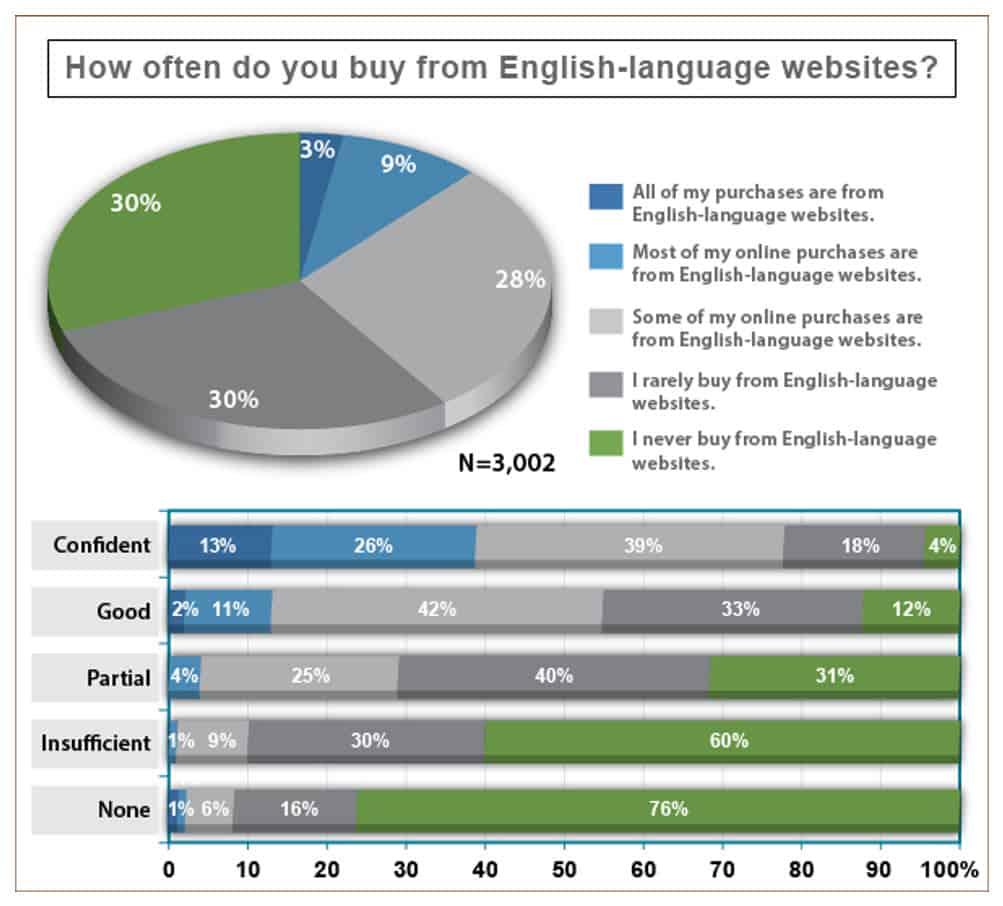
Full disclosure, I’m drawing heavily on a fantastic report from CSA Research called “Can’t Read, Won’t Buy”. If you’re interested in getting into this subject in more detail, ask them nicely and they might give you a free copy!
Ian:Can you outline what the ‘translation triggers’ can or should be?
Tim:This can be divided into three different elements. First, which markets do you have ambitions to sell your products or services into. Second, people’s competence with English in those markets. This is something which isn’t a yes or a no but is a gradation that runs from fully competent to not speaking or comprehending a word, with lots of shades in between. The third question involves looking at your target demographic, particularly in terms of age but also things like socio-economic grouping, and drilling down a bit deeper to find out how good English comprehension is within that specific target demographic. Answering these three will give you a good idea whether English is going to be good enough in the markets that you’re trying to sell to. If you’re looking for some help working through your translation strategy, that’s something we can help with too.
Ian:OK, so can you give some examples to illustrate the variation between different markets?
Tim:There are some great examples of markets where you really have to translate for most demographics. In Japan or France for example, you’re very unlikely to make progress with an English website! Other markets – for instance Egypt – are much more tolerant.
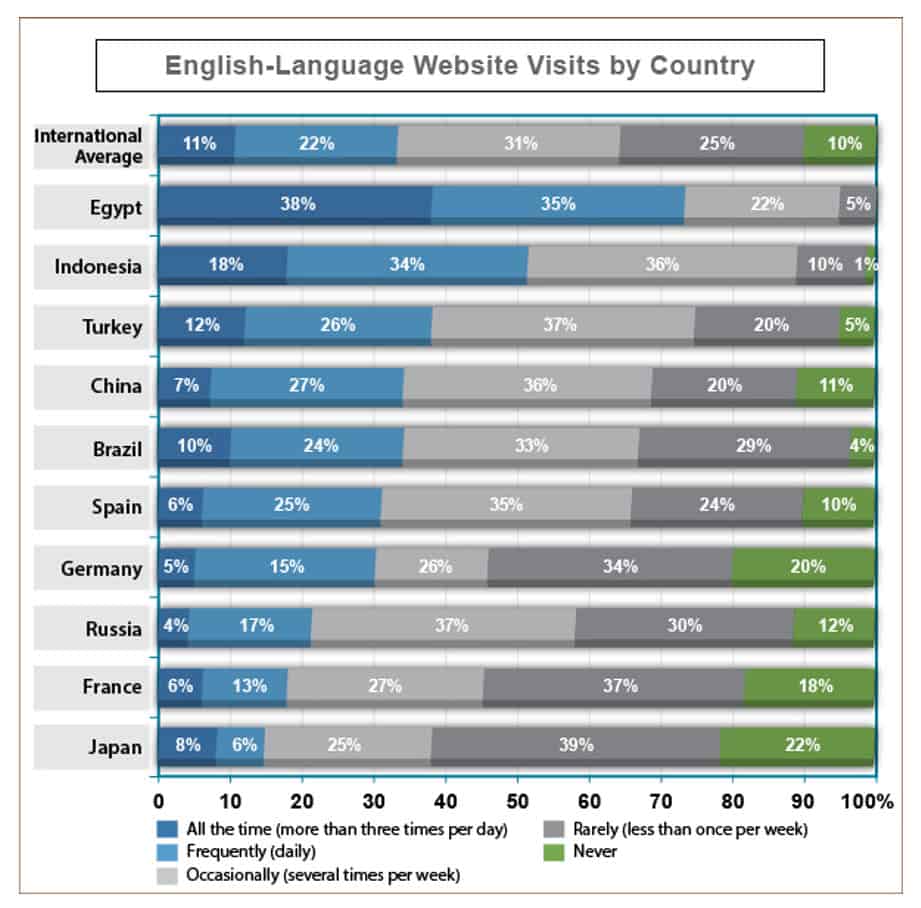
Ian:How substantial a factor is the size of a market’s GDP in triggering a decision to translate into that market’s language?
Tim:The size of a market combined with its English competence could be captured in an algorithm – something like: Large Market x Low Competence in English = Translate for Pete’s sake!!
You could create a translation projection for a potential market by simply combining, for Japan for example, a target age demographic with that demographic’s average English competency to create a formula that tells you to translate your English content, or to not bother. If you’re interested in seeing which are the most attractive markets for you, the CIA’s World Factbook has some great data.
To give a obvious example, let’s say you have a health product that you’re targeting at the Japanese market with. You’re likely targeting a market which is 40+ and you’d be making a serious error not translating the related content into Japanese because it’s a big market with low competence in English. If you think that you’ve got a market for a product amongst millennials in Egypt on the other hand, that’s a pretty English competent, small market so you’ll be OK not translating into Arabic. These are two extremes, and you can look at every different intersection point of market size/English competency and determine for the size of your business, the budget you have and your overall business objectives whether it’s worthwhile to translate.
Ian:How do we factor in English only versus translated content as it relates to brand loyalty for certain goods (multiple shirt or trouser purchases annually say) and other purchases that customers make which doesn’t involve loyalty to a particular brand (certain types of shoes)?
Tim:If you have a strong brand you’re more likely to get away with having only English content. If Ben Sherman shirts is a brand that you have purchased before and identify with you’re more likely to be unconcerned about the fact that their website content isn’t available in your language (although I’m guessing that’s actually not the case with Ben Sherman!).
To finesse this point somewhat, Amazon’s A+ and B+ content employment is particularly effective because it takes the product bullet points everyone is familiar with and builds it into the product image. Imagery is created to specifically highlight a particular product feature or benefit, and alongside the image is text that highlights what’s being shown. Take a walking jacket for example, we’d mention that it’s waterproof and we’d highlight the waterproofing details; just showing the picture in the A+ and B+ content model isn’t sufficient, as it’s bolstered with text that says “this is the benefit”. This is very effective in creating a customer understanding of the benefits of features of your product, thus increasing the confidence to make a purchase.
Even in the case of a strong brand, which is likely asking people to pay a brand premium, it’s desirable to build the customer’s conviction that it’s worth her paying an extra £50 for your walking jacket. Why ask people in Germany or Japan to pay a premium for your brand if you can’t be bothered to effectively highlight the benefits in German and Japanese?
Ian:How does the availability of content in a customer’s own language impact online sales versus bricks & mortar shopping?
Tim:This is about demographics as much as it’s about language. If you grew up before the internet and are accustomed to buying from shops, then you still do that. I buy clothes online even though I grew up without the internet, and I guess people under 60 generally are more comfortable with buying online but this varies market to market. The higher the proportion of ecommerce in your country, the more likely that you’ll buy online, and if do you buy online and don’t speak English it’s also likely that you’re not going to buy from an English language website. This is a fairly complex scenario, and it’s absolutely relevant; if you’re selling shoes in a country with a high proportion of ecommerce and low English competency then you absolutely have to translate your content – English really isn’t good enough.
Ian:We’ve talked about the impact of price on the need for translation – what about the impact of product availability?
Tim:People are prepared to tolerate English only content if they can’t buy a product anywhere else. This in a way is bottom feeding in the same way one is doing that with a customer base of bargain hunters – price-conscious consumers are generally far more likely to tolerate English, but so are lots of other consumers when you’re the only online store with availability.
Even if you have exclusivity you have to consider whether there’s enough demand for your product or service without translating your content. There isn’t sufficient demand for your product or service if the customer hasn’t bought into the value of your product or service – people aren’t going to spend a penny on what you’re offering if they don’t believe you’re offering them value, and how can you expect them to know that if your content is only in English?
Language isn’t the only deciding factor for customers; the image and associations play a big part too. Brad Pitt’s Japanese may be lousy but he looks damn good in that hat!






